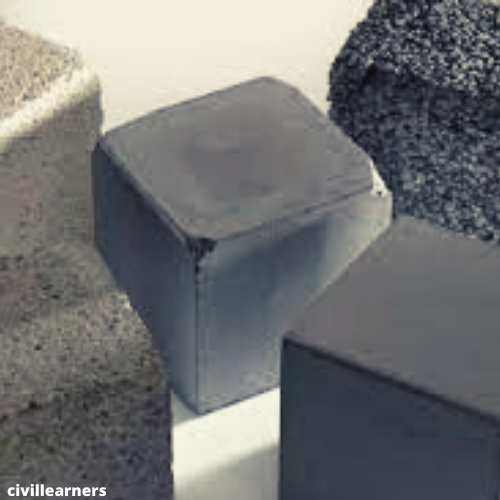ULTRA LIGHTWEIGHT CONCRETE
Ultra-lightweight concrete with a unit weight or density of 600 to 31000 kg / m is made from a mixture of cement, sand (left for concrete with a unit weight or density of less than 600 kg / m3), and extended-polystyrene. One to six-millimeter diameter beads.
This concrete has high thermal insulation efficiency and is mainly compatible with prefabricated non-load bearing panels, hollow and solid blocks, lightweight sandwich panels, and highway construction as a sub-base that threatens the subgrade’s stability.

Polystyrene beads or foam making is essentially a polymerization process that utilizes a liquid styrene monomer dispersed in aqueous media containing a foaming or expanding agent and a polymerization catalyst.
Foam or extended bead products can be treated with bromine solutions to improve fire retardancy and self-extinguishing properties. Enlarged beads usually have a density between 12 and 25 kg / m3, however, the foil form produces a density of 330 to 75 kg / m.
The most commonly used size range for extended beads is 1 to 3 mm. When exposed to sunlight, foam or beads will deteriorate and cause a distinct yellow color.
Extended-polystyrene concrete mixtures can be designed to have compressive strengths of 15 to 20 MPa at a concentration of 1600 kg / m3.
The blended design aims to achieve an economical and optimal balance between density, thermal insulation, and energy. Extended-polystyrene beads are electrostatically charged during processing, which makes it difficult to be hydrophobic when mixed.
Separation tendencies can be overcome by binding agents (usually water-emulsified epoxies and aqueous dispersions of polyvinyl propionate) and controlling the liquidity of the paste or mortar.
The compressive strength and thermal insulation properties of extended-polystyrene concrete increase with its density. Due to the low specific heat capacity, the heat of the hydration of the cement causes a greater and more rapid increase in the temperature of this concrete, which sets it up faster than conventional aggregated concrete and accelerates hardening.
You may also like: Thermal properties of concrete
Setting and hardening rates can be controlled by selecting suitable cement and using water-reducing blends. Traditional feasibility tests include the slump test, the compacting factor test. The Vee-Bee test and the Flow Table test are not appropriate in the case of extended-polystyrene concrete.
Conventional techniques can be used to cast and place extended-polystyrene concrete. The mechanical properties of extended polystyrene concrete are a function of density in the case of other lightweight aggregate concrete but have relatively low values. The elastic and shrinkage deformations are substantially greater than the normal weight of concrete.
You may also like: Permeability of concrete

